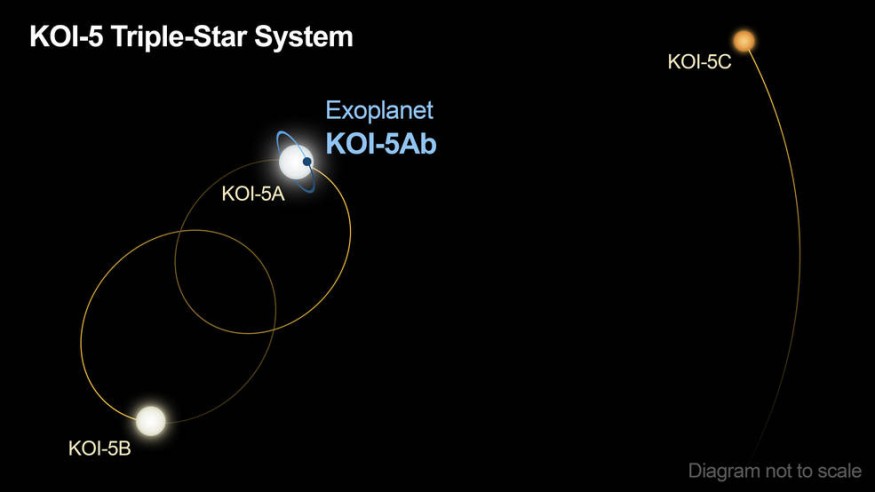NASA's Kepler mission spotted a triple-star system shortly after it started its mission in 2009. It is composed of three stars and an exoplanet that is about half the size of Saturn, called KOI-5Ab. It is the second exoplanet discovered by Kepler but the mission set it aside as it discovered more planets along the way.
By 2018, the Kepler mission had discovered 2,394 exoplanets and an additional 2,366 exoplanet candidates that still needs confirmation.
NASA's Exoplanet Science Institue chief David Ciardi said that the KOI-5Ab got abandoned at the time of its discovery because it was complicated and that they have many exoplanet candidates that are easier to study than KOI-5Ab.
But after a few years, the astronomers were able to untangle all the evidence on KOI-Ab and prove its existence using the Transiting Exoplanet Survey Satellite (TESS). NASA noted the unusual location of the planet orbit in a triple-star system and circling around in a plane that is out of alignment with at least one of its stars.
The skewed arrangement intrigued many scientists, asking questions how each member of the triple-star system was formed out of swirling gas and dust, and how their properties differ from single-star systems. By studying the triple-star system in detail, the scientists hope to gain insight into how the universe creates the planets.

Planet KOI-5Ab Exists
Ciardi said that if it were not for TESS looking at the telescope again, they would have never gone back and looked at KOI-5, the triple-star system that was first discovered by NASA's Kepler mission.
Added to the data from space and ground-based telescopes, it helped the confirmation of the existence of KOI-5Ab as a planet which is about one-half the mass of Saturn that orbits Star A that has a relatively close companion, called Star B, that orbits each other every 30 years. A third star is also included, called Star C, which orbits the two stars every 400 years.
Moreover, the data revealed that the orbital plane is somehow not aligned with the orbital plane of Star B as might be expected if all the stars in the triple-star system came from the same disk of swirling dust, Phys.org reported. In theory, a triple-star system is born together out of the same disk of dust and gas.
However, the findings suggest that what caused the misalignment of planet KOI-5Ab must be due to the second star gravitationally kicked the planet during its youth, therefore creating a skewed configuration and caused it to migrate inward.
Multiple-Star Systems Might Be More Common Than Once Thought
Most star systems being discovered are single-star systems ad only a few multiple-star systems. However, the discovery of the KOI-5 triple-star system is not the first evidence of a double- and multiple-star system. One notable multiple-star system is the GW Orionis, a planet-forming disk that had been torn into misaligned rings.
Scientists have already discovered hundreds of multiple-star systems but it is still lower than the single-star system. They said that future instruments, like the Palomar Radial Velocity Instrument (PARVI) and the Keck Planet Finder, will hopefully open up new avenues for answering why there fewer multiple-star system is being discovered.
Check out more news and information on Exoplanets on Science Times.
© 2025 ScienceTimes.com All rights reserved. Do not reproduce without permission. The window to the world of Science Times.











